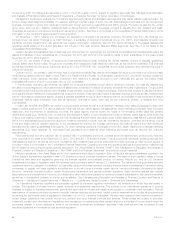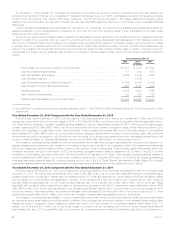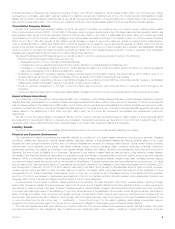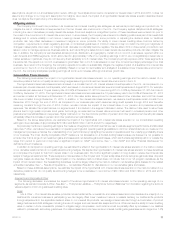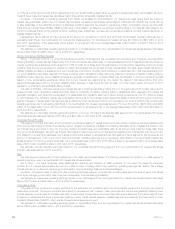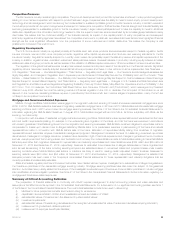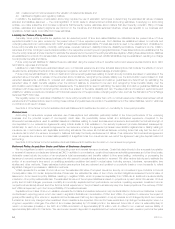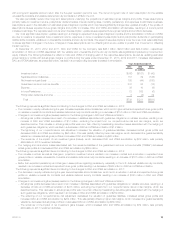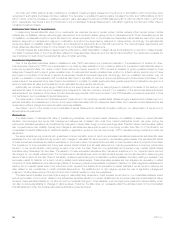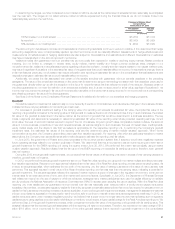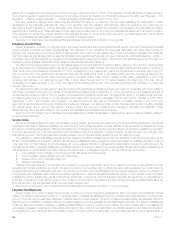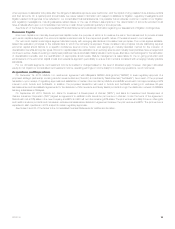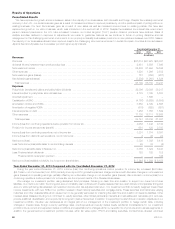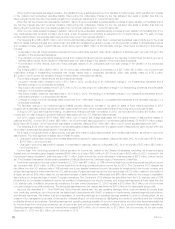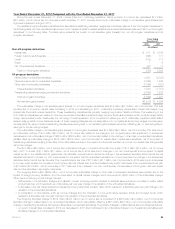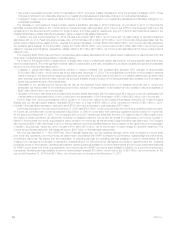MetLife 2013 Annual Report Download - page 22
Download and view the complete annual report
Please find page 22 of the 2013 MetLife annual report below. You can navigate through the pages in the report by either clicking on the pages listed below, or by using the keyword search tool below to find specific information within the annual report.(viii) measurement of income taxes and the valuation of deferred tax assets; and
(ix) liabilities for litigation and regulatory matters.
In addition, the application of acquisition accounting requires the use of estimation techniques in determining the estimated fair values of assets
acquired and liabilities assumed — the most significant of which relate to aforementioned critical accounting estimates. In applying our accounting
policies, we make subjective and complex judgments that frequently require estimates about matters that are inherently uncertain. Many of these
policies, estimates and related judgments are common in the insurance and financial services industries; others are specific to our business and
operations. Actual results could differ from these estimates.
Liability for Future Policy Benefits
Generally, future policy benefits are payable over an extended period of time and related liabilities are calculated as the present value of future
expected benefits to be paid, reduced by the present value of future expected premiums. Such liabilities are established based on methods and
underlying assumptions in accordance with GAAP and applicable actuarial standards. Principal assumptions used in the establishment of liabilities for
future policy benefits are mortality, morbidity, policy lapse, renewal, retirement, disability incidence, disability terminations, investment returns, inflation,
expenses and other contingent events as appropriate to the respective product type and geographical area. These assumptions are established at the
time the policy is issued and are intended to estimate the experience for the period the policy benefits are payable. Utilizing these assumptions, liabilities
are established on a block of business basis. If experience is less favorable than assumed, additional liabilities may be established, resulting in a charge
to policyholder benefits and claims.
Future policy benefit liabilities for disabled lives are estimated using the present value of benefits method and experience assumptions as to claim
terminations, expenses and interest.
Liabilities for unpaid claims are estimated based upon our historical experience and other actuarial assumptions that consider the effects of current
developments, anticipated trends and risk management programs, reduced for anticipated salvage and subrogation.
Future policy benefit liabilities for minimum death and income benefit guarantees relating to certain annuity contracts are based on estimates of the
expected value of benefits in excess of the projected account balance, recognizing the excess ratably over the accumulation period based on total
expected assessments. Liabilities for universal and variable life secondary guarantees and paid-up guarantees are determined by estimating the
expected value of death benefits payable when the account balance is projected to be zero and recognizing those benefits ratably over the
accumulation period based on total expected assessments. The assumptions used in estimating the secondary and paid-up guarantee liabilities are
consistent with those used for amortizing DAC, and are thus subject to the same variability and risk. The assumptions of investment performance and
volatility for variable products are consistent with historical experience of the appropriate underlying equity index, such as the Standard & Poor’s Ratings
Services (“S&P”) 500 Index.
We regularly review our estimates of liabilities for future policy benefits and compare them with our actual experience. Differences between actual
experience and the assumptions used in pricing these policies and guarantees, as well as in the establishment of the related liabilities, result in variances
in profit and could result in losses.
See Note 4 of the Notes to the Consolidated Financial Statements for additional information on our liability for future policy benefits.
Reinsurance
Accounting for reinsurance requires extensive use of assumptions and estimates, particularly related to the future performance of the underlying
business and the potential impact of counterparty credit risks. We periodically review actual and anticipated experience compared to the
aforementioned assumptions used to establish assets and liabilities relating to ceded and assumed reinsurance and evaluate the financial strength of
counterparties to our reinsurance agreements using criteria similar to that evaluated in the security impairment process discussed subsequently.
Additionally, for each of our reinsurance agreements, we determine whether the agreement provides indemnification against loss or liability relating to
insurance risk, in accordance with applicable accounting standards. We review all contractual features, including those that may limit the amount of
insurance risk to which the reinsurer is subject or features that delay the timely reimbursement of claims. If we determine that a reinsurance agreement
does not expose the reinsurer to a reasonable possibility of a significant loss from insurance risk, we record the agreement using the deposit method of
accounting.
See Note 6 of the Notes to the Consolidated Financial Statements for additional information on our reinsurance programs.
Deferred Policy Acquisition Costs and Value of Business Acquired
We incur significant costs in connection with acquiring new and renewal insurance business. Costs that relate directly to the successful acquisition
or renewal of insurance contracts are deferred as DAC. In addition to commissions, certain direct-response advertising expenses and other direct costs,
deferrable costs include the portion of an employee’s total compensation and benefits related to time spent selling, underwriting or processing the
issuance of new and renewal insurance business only with respect to actual policies acquired or renewed. We utilize various techniques to estimate the
portion of an employee’s time spent on qualifying acquisition activities that result in actual sales, including surveys, interviews, representative time
studies and other methods. These estimates include assumptions that are reviewed and updated on a periodic basis or more frequently to reflect
significant changes in processes or distribution methods.
VOBA represents the excess of book value over the estimated fair value of acquired insurance, annuity, and investment-type contracts in-force at
the acquisition date. For certain acquired blocks of business, the estimated fair value of the in-force contract obligations exceeded the book value of
assumed in-force insurance policy liabilities, resulting in negative VOBA, which is presented separately from VOBA as an additional insurance liability
included in other policy-related balances. The estimated fair value of the acquired liabilities is based on projections, by each block of business, of future
policy and contract charges, premiums, mortality and morbidity, separate account performance, surrenders, operating expenses, investment returns,
nonperformance risk adjustment and other factors. Actual experience on the purchased business may vary from these projections. The recovery of DAC
and VOBA is dependent upon the future profitability of the related business.
Separate account rates of return on variable universal life contracts and variable deferred annuity contracts affect in-force account balances on such
contracts each reporting period, which can result in significant fluctuations in amortization of DAC and VOBA. Our practice to determine the impact of
gross profits resulting from returns on separate accounts assumes that long-term appreciation in equity markets is not changed by short-term market
fluctuations, but is only changed when sustained interim deviations are expected. We monitor these events and only change the assumption when our
long-term expectation changes. The effect of an increase (decrease) by 100 basis points in the assumed future rate of return is reasonably likely to
result in a decrease (increase) in the DAC and VOBA amortization of approximately $179 million, with an offset to our unearned revenue liability of
approximately $29 million for this factor. We use a mean reversion approach to separate account returns where the mean reversion period is five years
14 MetLife, Inc.


